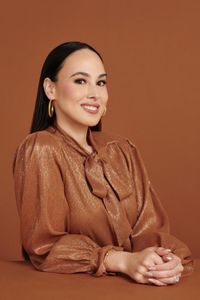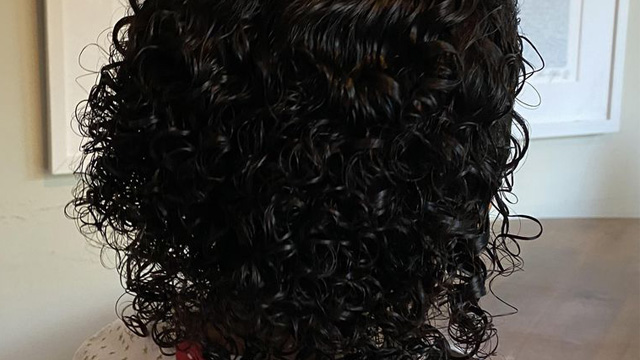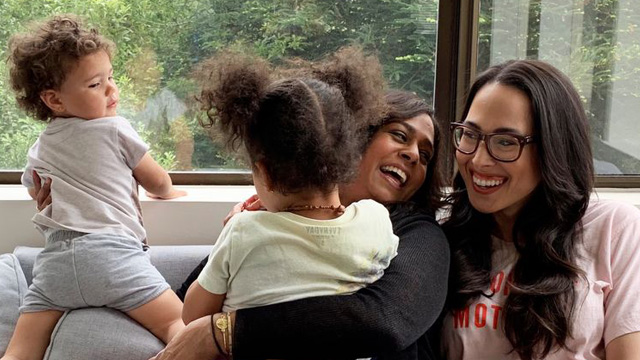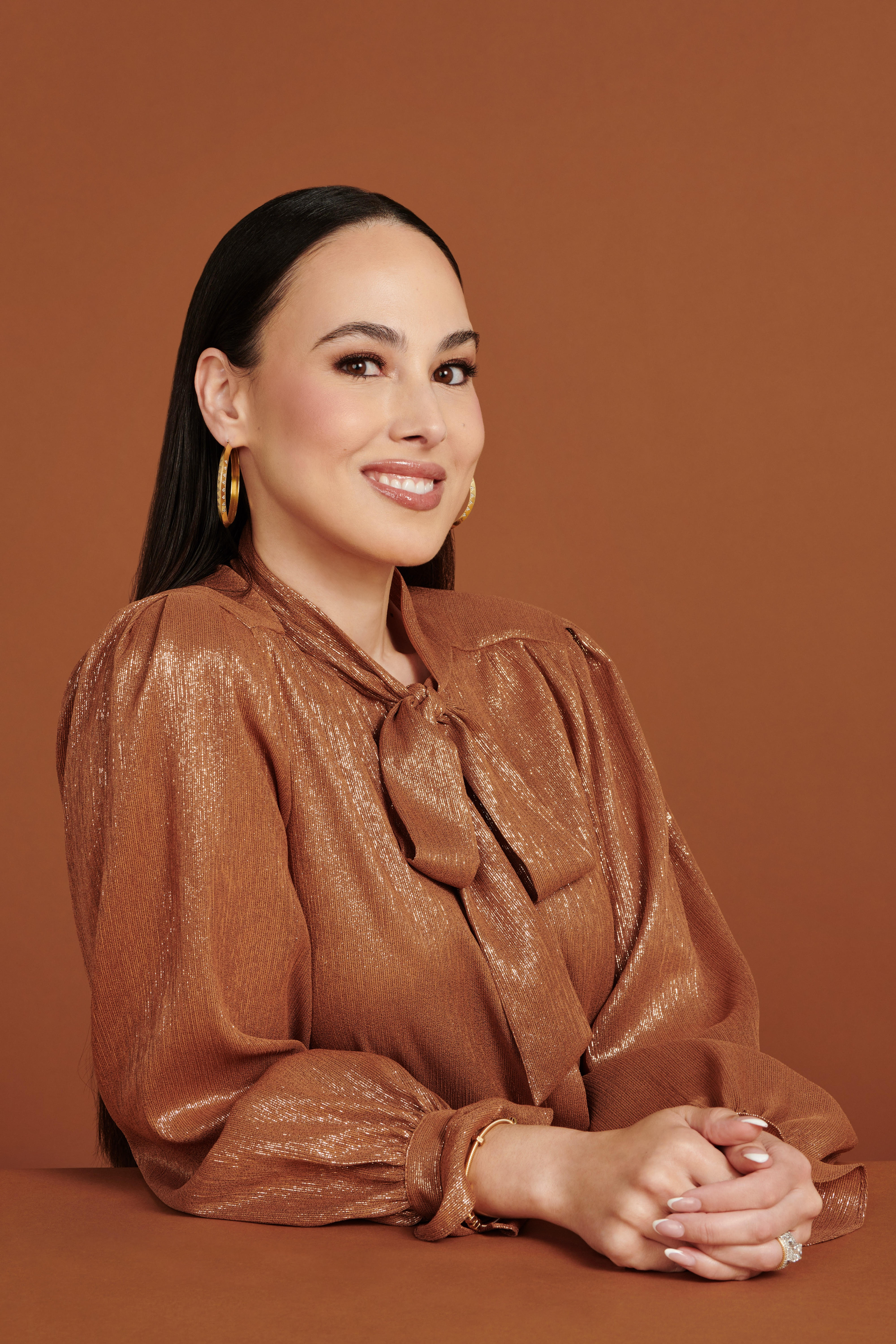Untangling Hair Bias
How young does it start? Younger than you think.


Of all the places I feared my children would face anxieties about their natural hair for the first time, the bathtub was not on my list.
Preschool, I assumed, would be the first environment where negative social and cultural influences might seep in. But it turns out the moment I’d been dreading—the first time my older daughter noticed she was “different” in a way that society didn’t seem to favor—happened much, much sooner: roughly a year before she started preschool, when she was only two.
One day, while splashing around in the bathtub, she started to play with her hair. When it’s dry, her hair is textured and beautifully curly. But as she played, she realized it could be lengthened and straightened when wet. So she started to do something I had never seen her do before: pull her hair straight with both hands, holding clumps of it excitedly and pasting it against her cheeks so it stayed straight on her skin.
“Look, look!” she exclaimed. “My hair is long!”

Harris’s daughter’s hair appears longer after a bath.
On its own, this seemed fairly innocuous, even adorable. But soon I noticed a subtle pattern emerging: Whenever we spent time with my mom, my daughter would comment enviously on her hair, which is long and slightly wavy like mine, though she and I often blow it straight or curl it with a curling iron. (“Grandma, your hair looks long!” she’d say.) Whenever my daughter’s own darker, thicker curls were wet, she’d gleefully pull them straight—or swing her head from side to side, savoring the feeling of movement and length, her glistening curls slapping her cheeks.
Gradually, it became clear that my daughter was expressing at least a preference, and maybe even a longing, for the kind of long, straight hair that society tells us is “attractive”—as well as a frustration that her natural hair was different and somehow less desirable.
It became clear that my daughter was expressing a preference for the kind of long, straight hair that society tells us is “attractive.
I don’t want to overstate her feelings; at this age, all my daughter knows is that her hair is “different,” and that she loves (and wants to imitate) her grandma. But as she grows older, she’ll learn—as so many little girls learn—that this particular difference arises from exclusive ideas about beauty and self-image, many of which have deep roots in harmful stereotypes.
Get exclusive access to fashion and beauty trends, hot-off-the-press celebrity news, and more.
She’ll also learn that she’s far from alone. Studies have repeatedly shown that subtle forms of bias begin to affect children at an alarmingly early age. For instance, three-quarters of a century ago, a landmark psychological study known as the “doll test” demonstrated that children as young as 3 years old tend to associate positive qualities with light-skinned dolls, and negative qualities with dark-skinned ones. More recently, a 2017 report about perceptions of natural hair found that most Americans of all ages—including women of color themselves—“hold some bias towards women of color based on their hair.” And this bias has grown so problematic that, over the past few months alone, seven states and two municipalities have either passed or proposed legislation to outlaw “race-based hair discrimination” in schools and workplaces.
As a parent, it’s hard not to feel like this body of evidence validates my concern—or at least my desire to stay ahead of my daughter’s self-image as it takes shape. It only serves to underscore how challenging—and how vital—it is to educate our kids patiently, proactively, and with intention, as well as the importance of young people seeing themselves reflected in pop culture and leadership.
In my experience, you can’t adequately explain to a 2-year-old why beauty standards are largely based on long, straight-haired white women—or why she should be proud of her hair, even though it might not be appreciated by others or could cause her to be treated unfairly someday. But you can surround that child with images and messages that expand notions of who and what we consider to be beautiful.

Harris (far right) with her mom and her children.
As with everything about parenting, this is easier said than done. But things do appear to be trending—slowly—in the right direction. Last spring, Ava Duvernay appeared on the cover of this magazine in her signature dreads. Last summer, Serena Williams rocked natural curls on the cover of Harper's Bazaar. And just last week, Congresswoman Ayanna Pressley released a courageous video in which she celebrated her twists while opening up about alopecia, showing that power and beauty can flow through hair as an essential part of identity, but also transcend it.
As a society, we still have a long way to go. But if these examples are any indication, by the time my daughter is old enough to actively consume media, hopefully she'll have no trouble seeing—and celebrating—herself anywhere she looks.
In the meantime, my partner and I are focused on expanding her horizons. After we noticed our daughter was starting to obsess about her hair, we became more deliberate about pointing out friends and family members who have hair similar to hers. I went out of my way to praise her curls, explaining that everyone’s hair is different in its own way—and that some people spend a lot of time and effort to make theirs look just like hers. And in addition to watching Daniel Tiger when I do her hair in the morning, we also spend time with a wonderful book and Oscar-nominated animated film called Hair Love, an uplifting story about a little girl with natural hair that “kinks, coils, and curls every which way.” We recently spotted Hair Love at a local bookstore, and my daughter’s eyes lit up; the pride and excitement in her voice—the joy at seeing people like her not just represented, but celebrated—were unmistakable.
Little by little, she seems to be getting the message. Recently, my daughter has started to vocally admire her hair when we put it in braids. And one day, totally unprompted, she exclaimed, “I like her hair!” when she saw a natural-haired character on TV. It makes me feel optimistic—even if the path to getting the rest of society to love natural, curly hair will be anything but straight.
For more stories like this, including celebrity news, beauty and fashion advice, savvy political commentary, and fascinating features, sign up for the Marie Claire newsletter.
RELATED STORIES


Meena Harris is the founder and CEO of the Tony-Award winning company Phenomenal Media. She is a #1 New York Times bestselling children’s book author, as well as a lawyer and an influential voice for gender and racial equity. She currently resides in the Bay Area with her husband and two daughters.
